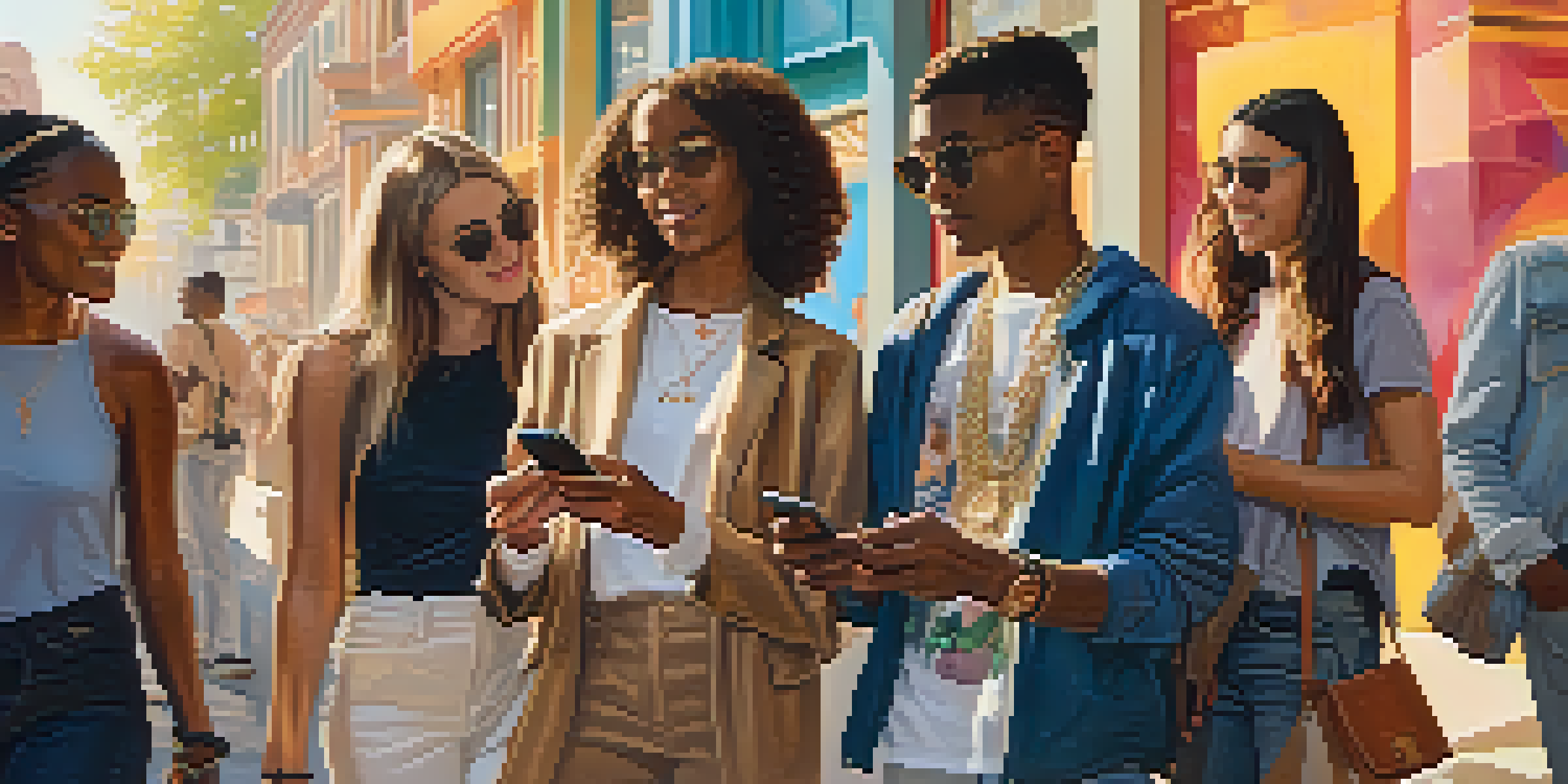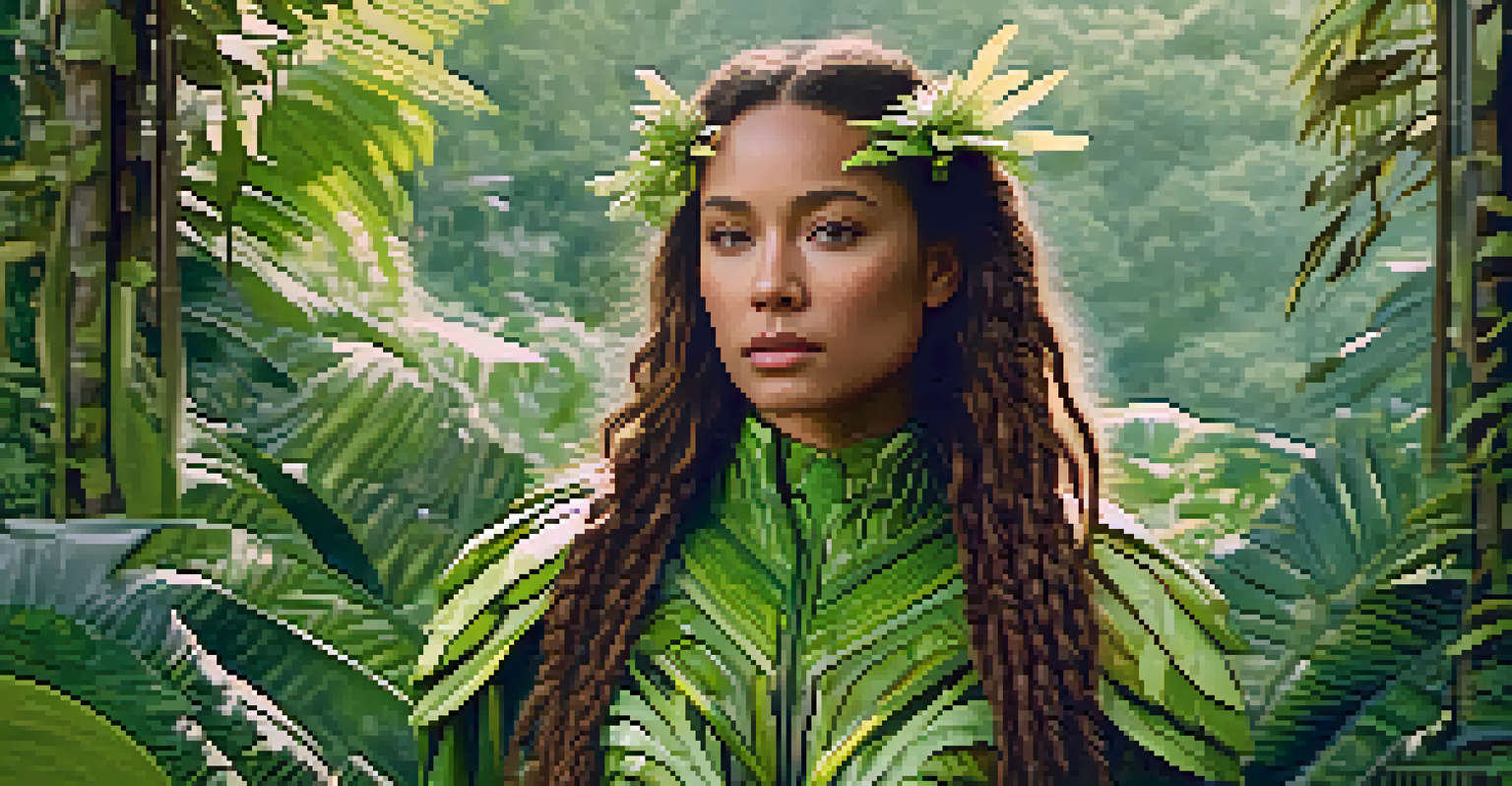The Impact of Social Media on Fashion in Film and TV

Social Media: A New Fashion Trendsetter
In the age of social media, platforms like Instagram and TikTok have become the new trendsetters in fashion. These platforms allow designers, influencers, and everyday users to showcase their style, which can quickly gain traction and influence mainstream fashion. For instance, a simple hashtag can spark a worldwide trend, impacting what we see on our screens in film and TV.
Fashion is the armor to survive the reality of everyday life.
Fashion in film and television has always reflected societal trends, but now it can change almost overnight. Shows like 'Euphoria' have leveraged social media to create buzz around their characters' outfits, leading to increased sales and inspiration for viewers. This rapid exchange of ideas and styles is a game-changer for the industry.
Moreover, social media provides a platform for diverse voices, allowing underrepresented designers and styles to gain visibility. This shift not only enriches the fashion landscape but also encourages film and TV creators to explore a wider range of aesthetics, making content more relatable and exciting for audiences.
The Rise of Influencers in Fashion
Influencers have reshaped how fashion is marketed in film and TV. With their significant followings, these individuals can sway public opinion and impact viewer choices, blurring the lines between celebrity and everyday fashion. They often collaborate with brands to create looks that are later replicated in popular shows, creating a cycle of influence.

For example, when a fashion influencer wears a specific outfit, it can lead to a surge in demand for similar looks in television series. This symbiotic relationship between influencers and creators helps shape the aesthetic of shows, making them more appealing and relatable to the audience.
Social Media as Fashion Catalyst
Platforms like Instagram and TikTok have revolutionized how fashion trends emerge and gain popularity, influencing mainstream styles almost overnight.
Furthermore, influencers often share behind-the-scenes content, offering fans a peek into the fashion choices made for characters. This transparency fosters a deeper connection between viewers and the fashion showcased on their screens, making the experience more interactive and engaging.
Audience Engagement through Fashion Trends
Social media allows for direct engagement between audiences and their favorite shows, particularly regarding fashion. Fans often take to platforms to discuss and dissect outfits worn by characters, creating a community around shared interests. This interaction helps build a loyal fanbase and encourages more content centered around fashion.
Clothes mean nothing until someone lives in them.
Additionally, shows are increasingly incorporating audience feedback into their fashion choices. For instance, if a character’s outfit goes viral, creators may take that as a cue to explore similar styles in future episodes. This responsiveness not only enhances viewer satisfaction but also keeps the content fresh and relevant.
Moreover, fashion-related challenges and trends on platforms like TikTok can spark new conversations about style in film and TV. These trends often inspire creators to experiment with bold fashion choices, further enhancing the viewing experience and keeping audiences engaged.
The Role of Fashion Brands in Film and TV
Fashion brands have recognized the value of social media in promoting their products through film and television. Collaborations with shows often lead to increased visibility, making it easier for brands to connect with their target audience. This strategic partnership allows creators to curate specific looks that fit the narrative while promoting real-world products.
For instance, when a character wears a designer piece, it can lead to an immediate spike in interest and sales for that brand. This phenomenon showcases how social media amplifies the impact of fashion choices made in film and TV, transforming them into must-have items for fans.
Influencers Shape Fashion Narratives
Influencers play a crucial role in marketing fashion through film and TV, creating a cycle of influence that connects viewers with the styles they see on screen.
Moreover, brands often use social media campaigns to coincide with the release of new shows, creating buzz around the fashion featured. This synergy not only benefits the brand but also enriches the storytelling by adding layers of authenticity to the characters’ wardrobes.
Sustainable Fashion and Social Media Awareness
With the rise of social media, there is a growing awareness of sustainable fashion in film and TV. Influencers and creators are increasingly advocating for ethical practices, pushing for more sustainable wardrobe choices in their projects. This shift reflects broader societal concerns about environmental impact and encourages viewers to think critically about their fashion consumption.
Shows are now more likely to feature sustainable brands or highlight eco-friendly fashion choices, prompting discussions among audiences. For instance, a character wearing thrifted or upcycled clothing can inspire viewers to consider similar choices in their own lives, reinforcing positive behaviors.
Additionally, social media campaigns centered around sustainability can amplify these messages, creating a ripple effect. When audiences share their support for sustainable fashion, it encourages productions to prioritize these values, ultimately contributing to a more responsible fashion industry.
Cultural Representation in Fashion Choices
Social media has also played a pivotal role in promoting cultural representation through fashion in film and TV. Diverse voices can now share their unique styles and cultural heritage, which can influence the wardrobe choices of characters. This representation helps create more authentic narratives and allows viewers to see themselves reflected in the content they consume.
For example, shows that highlight specific cultural fashion trends can educate audiences while also celebrating diversity. This not only enhances the storytelling but also fosters a greater appreciation for different cultures and their contributions to the fashion industry.
Focus on Sustainable Fashion
Social media is raising awareness about sustainable fashion, encouraging creators to feature ethical choices and prompting audiences to consider their own consumption habits.
Furthermore, social media allows for dialogue about cultural appropriation and respect within the fashion space. When audiences engage in these discussions, it puts pressure on creators to be more mindful of their fashion choices, leading to more respectful representations on screen.
The Future of Fashion in Film and TV
As social media continues to evolve, its impact on fashion in film and TV will only grow stronger. We can expect to see even more collaboration between influencers, brands, and creators, leading to innovative fashion narratives on screen. This dynamic interplay will likely shape the future of storytelling, making fashion an integral part of character development.
Moreover, advancements in technology, such as virtual reality and augmented reality, may offer new ways for audiences to engage with fashion in film and TV. Imagine being able to try on outfits worn by your favorite characters through an app, blurring the lines between viewer and participant.

Ultimately, the fusion of social media and fashion in film and TV promises to create a more interactive and immersive viewing experience. As audiences continue to demand more diverse and relatable content, the industry will have to adapt, making fashion an essential aspect of storytelling.